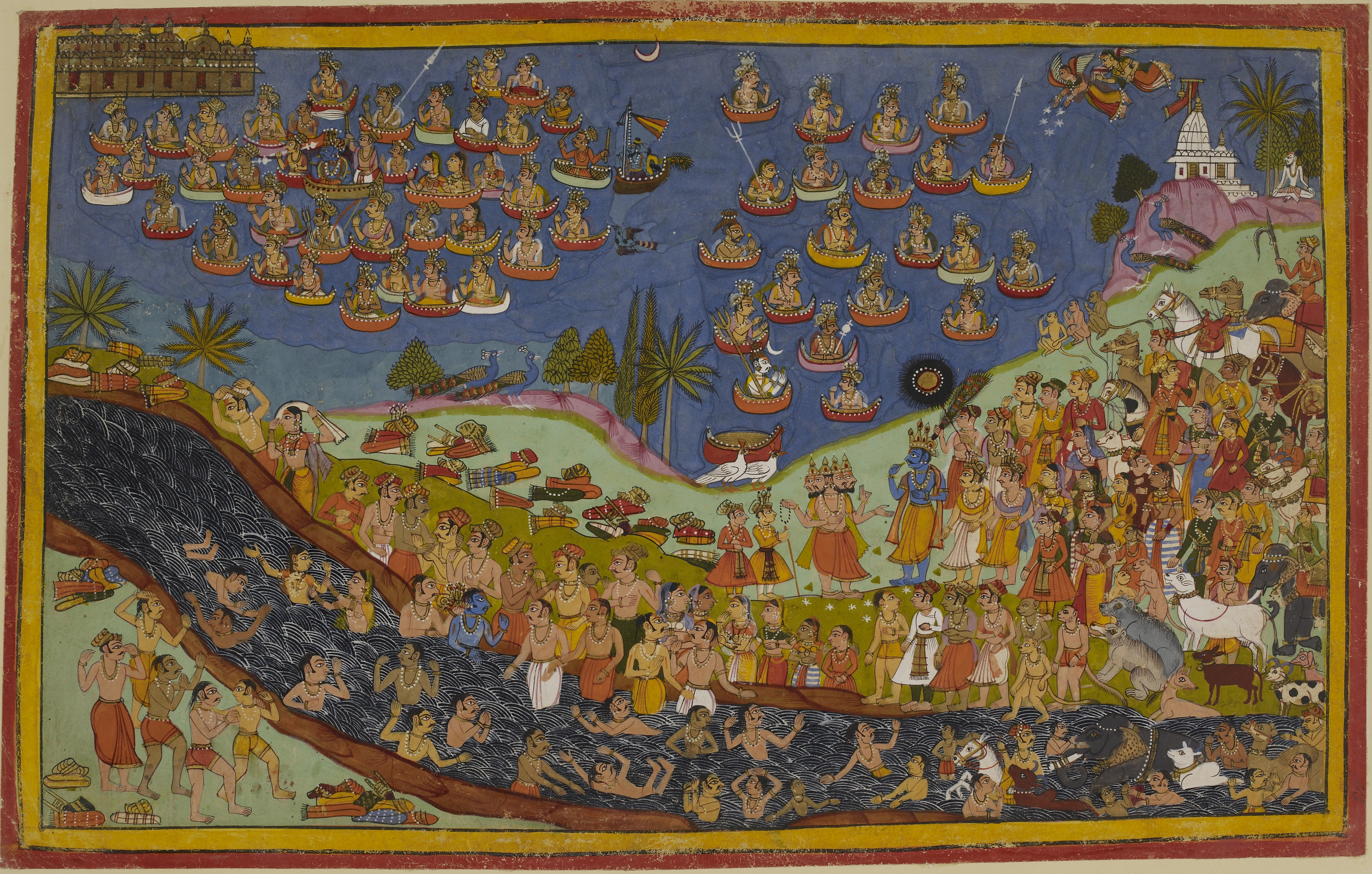With enthralling tales of malevolent genies, magical lamps and a restless seafarer named Sinbad, One Thousand and One Nights is surely the Arab world’s most famous story.
It continues to exert a magnetic pull on readers, cinemagoers, theatre directors, writers, musicians and artists, even if most have not, and never will read, all of the one million or so words that comprise most translations.
“This huge book contains within it practically every motif known to folklore and literature,” says Robert Irwin, author of The Arabian Nights: A Companion. “It’s just a massive source of cultural expression – and the influence it’s had on everyone, from Dickens to Proust, is incredible.”
Paulo Lemos Horta, an assistant professor of literature at New York University Abu Dhabi, who teaches One Thousand and One Nights, compares the story with Christopher Nolan’s brain-frying sci-fi movie Inception. “You’re in one dimension, and the book then takes you to another, and another,” he says. “It’s almost vertigo-inducing, how One Thousand and One Nights works. Remarkable, really.”
The story is as follows. A king comes home to find his wife has been unfaithful. He has her executed, but bears a grudge and marries a succession of women, killing each of them before they can betray him like their predecessor.
His latest bride, Scheherazade, delays her imminent doom by telling him part of a wonderful story each night. Intrigued and enthralled, the king postpones her execution so she can finish the tale the following night, at which point, of course, she starts another tale, forcing him to further delay her death.
This ploy continues for, you’ve guessed it, 1,001 nights, during which time she tells enchanting tales of romance and crime, ghouls and jinns, heroes and villains. They are graphic and passionate, earthy yet transcendental.
Their origins are sketchy to say the least, probably a composite of stories from India and Persia, likely to have been translated into Arabic in the 8th century and added to by Iraqis, Syrians and Egyptians over the centuries that followed during the Islamic Golden Age. The first English translation appeared in 1706. Its protagonists – including Aladdin, Sinbad and Ali Baba – have taken on lives of their own in popular culture, and their influence cannot be underestimated. “I was at the right age when the Disney Aladdin came out,” says bestselling young adult author Alwyn Hamilton of her introduction to One Thousand and One Nights.
“It sparked something off in me that meant I became intrigued by this mystical, slightly out-of-reach place just beyond my understanding. I had this beautiful illustrated child’s version [of the book] – so it took me a while to realise that the original stories were probably a bit inappropriate for younger readers.” Disney’s animated musical adaptation of Aladdin’s tale began Hamilton’s lifelong interest in One Thousand and One Nights, which influenced the choices she made when beginning her own storytelling career.
The result was last year’s Rebel of the Sands, in which “mortals rule the desert nation of Miraji, but mystical beasts still roam the wild and barren wastes, and rumour has it that somewhere, jinns still practice their magic”. This distinctly One Thousand and One Nights feel is combined with a hero who is straight out of a Western.
“I’d say The Arabian Nights was like a shorthand for the general atmosphere, without me directly stealing from it,” she says. “I realised that Westerns and Arabian Nights share quite a lot – bandits, the desert setting and so on. It felt like it could work.”
It certainly did, and a sequel, Traitor to the Throne, will be published next month.
Hamilton’s success seems to confirm Horta’s belief that one of the great strengths of the original text is that it allows writers to appreciate and understand the tools and techniques of storytelling.
The irony is that the Aladdin story so loved by Hamilton, and generations of children around the world, was not part of the original One Thousand and One Nights at all. Nor was Ali Baba and the Forty Thieves.
The tale of these so-called “orphan stories”, added to the original text, is almost as intriguing as one of Scheherazade’s tales.
Irwin jokes that he’s seen literary historians “practically at each other’s throats” arguing over whether these stories are Arab, Indian or European additions in 1709, when Antoine Galland published his famous French translation.
“The fact is, no original Arabic manuscript with these stories exists,” he says.
“They were told to Galland by a Christian Arab from Aleppo in 1709, and Galland was pretty slap-happy about what got translated and how it was included. After all, he was writing to entertain ladies in the French court.”
This mysterious Syrian, Hanna Dyab, forms the basis of Horta’s new book, Marvellous Thieves, in which he calls for a reappraisal of the way we look at the orphan stories.
“For too long, people have regarded Arabian Nights’ lofty status in world literature only as a result of the work of the European translators,” he says.
“I now think that’s an exaggeration. Dyab genuinely did have an influence on them and he told the stories he’d heard back home in a way he knew they’d like to hear.”
Horta says it is telling that while refugees from Aleppo are being shut out from the United States by the president, Aladdin the Musical is popular in theatres. In any case, it is testament to the universal nature and sheer malleability of these stories that they can exist in so many different forms.
As Hamilton puts it, they are “so vivid, yet a blank canvas to be interpreted in a variety of ways”.
One artistic director doing just that is Charlotte Desorgher, whose Oriental ballet, Scheherazade and 1,001 Nights, is touring the United Kingdom and Europe. The representations of the stories by Company of Dreams are not exact, but Desorgher promises “scenes full of ghouls, sorcerers, Sinbad, genies, fire and snakes”.
“What I’m trying to create is a thrilling narrative, a frisson of excitement about stories that can transport people into an exotic world,” she says.
This brings us to the elephant in the room: Orientalism. Is there not a danger that in the championing of One Thousand and One Nights across many cultural forms as exotic and dangerous, the West stereotypes?
“Well, you do have to be sensitive,” says Desorgher. “You have to create a wonderful story without sentimentalising it.
“One of the things that makes me incredibly sad is that young people in the West can easily associate the Middle East with war, terrorism and bombings. What I wanted to do is remind people of this wonderful tradition of mythology, magic and fantasy. They are marvellous stories, after all.”
Horta agrees. In 2014 he worked on the Everyman’s Library Anthology of 1,001 Nights, which rather than using a single translation of the story, used several to tell the “best” version.
“Richard F Burton is good with satire,” he says. “Edward Lane is very good with magic and genies. The translators all have different qualities, and that way you give people the chance to fall in love with every story.
“There isn’t one way of telling these stories.”
He points to plays staged in refugee camps, and two TV soap operas in Turkey and Egypt. So even if all one million words of One Thousand and One Nights are rarely read, the stories continue to enthral.
“They are central and elemental, still,” says Horta. “So yes, we stereotype and call it fantastical. But there was something revolutionary about these stories of merchants or cobblers – everyday people – which remind us that our histories are intertwined and interwoven.”


